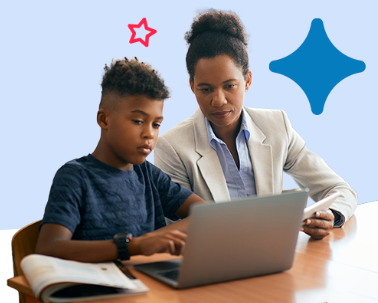Encouraging Growth, Positivity, and a Love for Learning
Confidence is one of the most powerful tools a student can have.
It helps them speak up in class, try new things, and bounce back from mistakes.
While confidence may come naturally to some, it’s a skill that can be nurtured in every student — with the right support, encouragement, and mindset.
By focusing on positive habits and healthy self-belief, families and educators can help students feel more capable, motivated, and proud of their progress.
Why Confidence Matters in Learning
When students believe in themselves, they’re more likely to:
-
Participate actively in class
-
Take on challenges with a growth mindset
-
Recover from setbacks with resilience
-
Set and achieve goals
-
Feel comfortable asking questions or seeking help
Confident students don’t need to be perfect — they just need to feel capable and supported as they grow.
Ways to Help Build Student Confidence
1. Celebrate Effort, Not Just Results
Confidence grows when students see that their hard work matters. Praise them for their progress, not only for getting the right answer.
Say this:
“I’m proud of how much effort you put into this,” or
“You tried something new — that’s brave!”
2. Encourage a Growth Mindset
Teach students that abilities can improve over time with practice. Help them reframe mistakes as part of learning.
Instead of: “I’m just not good at math.”
Try: “I’m still learning math, and I’m getting better.”
3. Give Them Opportunities to Succeed
Break big tasks into smaller steps so students can experience success along the way. Small wins build confidence for bigger challenges.
Tip: Provide choices when possible — letting students pick a topic or task can increase their sense of control and confidence.
4. Be a Supportive Listener
Sometimes, all a student needs is someone to listen without judgment. Let them share their feelings and remind them that it’s okay to face challenges.
Reassuring words like:
“You’re not alone,”
“It’s okay to feel unsure — that just means you care,”
can make a big difference.
5. Model Confidence and Positivity
Adults can lead by example. Talk openly about your own learning process — including challenges and how you worked through them.
Example: “I used to struggle with this too, but I kept practicing and now I feel more confident.”
Final Thought
Confidence doesn’t happen overnight, but it grows with encouragement, kindness, and small daily wins. When students believe in their ability to learn and grow, they become more open to new opportunities — and more prepared to succeed, both in and out of the classroom.
Every student has the potential to shine. With the right support, they’ll learn not only what they can do — but who they can become.






